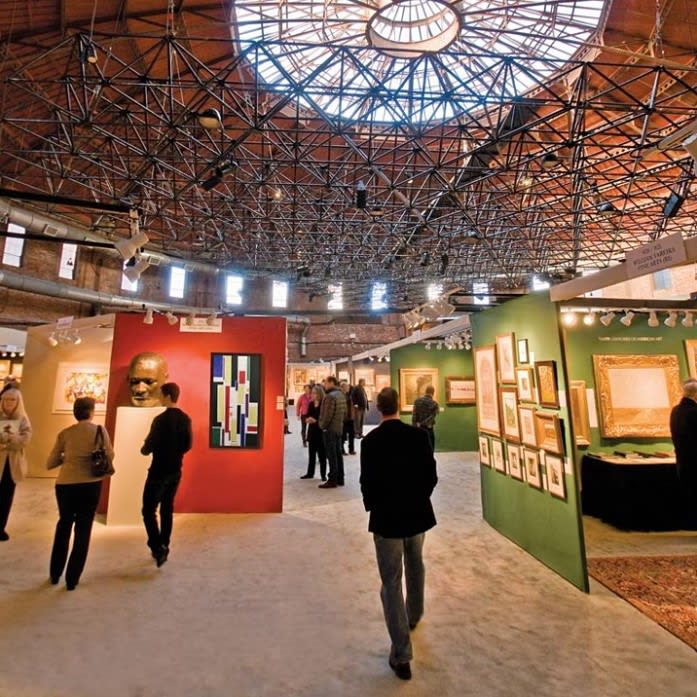Best known for his impressionist portraits,Henry Salem Hubbell painted works of art that may be considered 'decorations', painted at a time when that term encompassed none of the pejorative that it has gained over this last century. His work is exemplary of a 'genteel aestheticism' favored by some of the American painters at Giverny after the turn of the century, including Hubbell, and a reflection of the influence of Vermeer-inspired works. Elegant young women were often Hubbell's selected subjects.
Born in Paola, Kansas, Hubbell took his initial art training at the Art Institute of Chicago. In the late 1890s, he studied at the Julian Academy in Paris with Jean Paul Laurens, Louis Collin, Benjamin-Constant and James Whistler. Laurens' first comment on seeing Hubbell's work was, "Now here is a man who will be a portrait painter." The pupil had other and quite definite intentions, but the master with his training and insight was a true prophet. Whistler also predicted that someday "the world will know him as a colorist," and in Hubbell's portraiture, color is an outstanding characteristic. Much influenced by Whistler, Hubbell switched from genre to portraiture, and his technique is owed mainly to his mentor.
He was a friend of Frederic Frieseke, and from 1908 to 1910, became part of the American Colony of Impressionists at Giverny. Hubbell spent twelve years abroad in preparation for his career, and then returned to America where he achieved success as a portrait painter. He established a studio at Silvermine near Norwalk, Connecticut, from where he painted prominent figures and images of young women. He also headed the School of Painting at the Carnegie Institute of Technology in Pittsburgh.
Hubbell's other works are in the field of genre and figure, in social scenes and in the portrayal of varied types. The French government purchased two of his pictures. William M. Chase bought his painting, The Poet, a dreamy figure in a Paris café. Le Cocher was purchased by E. T. Stotesbury and was presented to the Union League Club in Philadelphia; The Samovar was presented by Baron Rothschild to the art museum of Lille, France; Booth-Tarkington possessed the Gold Fish; other pictures are found in public and private collections in Paris, London, and America. Many of his colleges owned his pictures. Some of Hubbell's greatest successes were portrayals of the evanescent charm of childhood and youth.
In his later works, he replaced the long stroke and the fully charged brush of his earlier works in favor of short strokes and broken color, which, while loose and flexible, permitted more exploration into the subtleties of personality and characterization.
Biography
Events
Enquire
